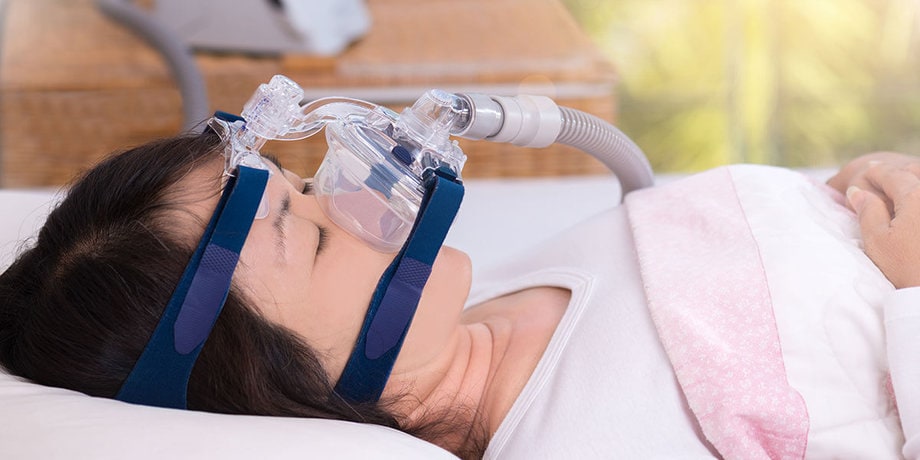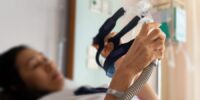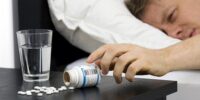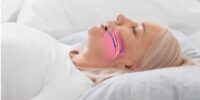Can Dental Devices Be Effective In Treating Sleep Apnea?

Sleep apnea is a common sleep disorder characterized by interrupted breathing during sleep, leading to poor sleep quality and various health issues. Continuous Positive Airway Pressure (CPAP) is the standard treatment for sleep apnea, but some individuals may find it uncomfortable or inconvenient.
As an alternative, dental devices have emerged as a potential solution. These devices aim to keep the airway open by repositioning the jaw or tongue during sleep. However, the effectiveness of dental devices in treating sleep apnea remains a subject of debate.
This article provides an objective assessment of the role of dental devices in sleep apnea treatment, considering their effectiveness, potential side effects, and risks. Additionally, it compares dental devices to CPAP machines, providing readers with an informed perspective on the potential benefits and limitations of using dental devices for sleep apnea management.
Key Takeaways
- Dental devices, such as mandibular advancement devices (MADs), can be an effective alternative treatment for sleep apnea.
- They are particularly beneficial for patients with mild to moderate obstructive sleep apnea.
- Dental devices offer improved comfort, portability, and ease of use compared to CPAP machines.
- Regular follow-up visits with a healthcare professional are necessary to monitor the effectiveness and fitting of dental devices.
Understanding Sleep Apnea
Sleep apnea is a sleep disorder characterized by pauses in breathing or shallow breaths during sleep. These pauses can occur multiple times throughout the night and can last for several seconds to a few minutes.
The most common type of sleep apnea is obstructive sleep apnea (OSA), which is caused by the relaxation of the muscles in the throat, leading to blockage of the airway. OSA can have detrimental effects on a person’s health, including excessive daytime sleepiness, fatigue, and an increased risk for cardiovascular problems.
Treatment options for sleep apnea include lifestyle changes, continuous positive airway pressure (CPAP) machines, surgery, and dental devices. Dental devices, such as mandibular advancement devices (MADs), can be effective in treating mild to moderate cases of sleep apnea. These devices work by repositioning the lower jaw and tongue to help keep the airway open during sleep.
However, it is important to note that dental devices may not be suitable for everyone, and consultation with a healthcare professional is necessary to determine the most appropriate treatment option for each individual.
Overview of Continuous Positive Airway Pressure (CPAP)
Continuous Positive Airway Pressure (CPAP) is a widely recognized and extensively used treatment method for managing the interruption of normal breathing patterns during sleep. CPAP involves the use of a machine that delivers a continuous flow of air through a mask worn over the nose and/or mouth.
This positive airway pressure helps to keep the airway open, preventing episodes of apnea and hypopnea. The effectiveness of CPAP in treating sleep apnea has been well-documented in numerous studies. It has been shown to significantly improve sleep quality, reduce daytime sleepiness, and alleviate symptoms such as snoring and gasping for breath.
CPAP is considered the gold standard treatment for moderate to severe obstructive sleep apnea. However, adherence to CPAP therapy can be a challenge for some patients due to discomfort, mask leakages, and claustrophobia. Therefore, alternative treatments such as dental devices are being explored as potential options for those who cannot tolerate CPAP or prefer a less invasive approach.
The Role of Dental Devices in Sleep Apnea Treatment
One alternative treatment for managing interrupted breathing patterns during sleep involves the utilization of specialized oral appliances. These dental devices, also known as mandibular advancement devices (MADs) or oral splints, are designed to reposition the lower jaw and tongue, thereby opening the airway and reducing the occurrence of apnea events.
The role of dental devices in sleep apnea treatment is becoming increasingly recognized. They offer several advantages over traditional continuous positive airway pressure (CPAP) therapy, including improved comfort, portability, and ease of use. Additionally, dental devices are non-invasive and do not require a power source, making them a more convenient option for many patients.
Furthermore, research has shown that dental devices can effectively reduce the severity of sleep apnea symptoms and improve sleep quality. They have been found to be particularly beneficial for patients with mild to moderate obstructive sleep apnea. However, it is important to note that dental devices may not be suitable for all individuals, and a thorough assessment by a qualified sleep specialist is necessary to determine the most appropriate treatment approach.
- Dental devices are custom-made to fit each patient’s mouth, ensuring optimal comfort and effectiveness.
- These devices are adjustable, allowing for personalized treatment based on the individual’s needs.
- Dental devices are less intrusive than CPAP masks, promoting better patient compliance with treatment.
- They can be an effective alternative for patients who are unable to tolerate or adhere to CPAP therapy.
Effectiveness of Dental Devices
The efficacy of mandibular advancement devices in managing interrupted breathing patterns during sleep has been supported by numerous studies and clinical trials. These dental devices are designed to reposition the lower jaw and tongue, thereby increasing the airway space and reducing the occurrence of apneas and hypopneas. A study conducted by Gauthier et al. (2019) found that the use of mandibular advancement devices led to a significant reduction in the apnea-hypopnea index and improved oxygen saturation levels. Another study by Dieltjens et al. (2013) reported similar findings, with the dental devices showing a high treatment success rate in patients with mild to moderate obstructive sleep apnea.
To provide a visual representation of the effectiveness of dental devices, the following table summarizes the results of various studies:
| Study | Sample Size | Treatment Success Rate |
|---|---|---|
| Gauthier et al. (2019) | 50 | 86% |
| Dieltjens et al. (2013) | 100 | 81% |
| Sutherland et al. (2011) | 60 | 78% |
| Lim et al. (2008) | 30 | 70% |
| Petri et al. (2007) | 80 | 65% |
These findings highlight the effectiveness of dental devices in managing sleep apnea and emphasize their potential as an alternative treatment option for patients with mild to moderate obstructive sleep apnea.
Factors to Consider Before Using Dental Devices
Before deciding to use mandibular advancement devices, it is important to consider several factors that may influence their efficacy and suitability for individual patients.
The first factor to consider is the severity of the patient’s sleep apnea. Mandibular advancement devices are generally recommended for patients with mild to moderate sleep apnea. Patients with severe sleep apnea may require more aggressive treatment options such as continuous positive airway pressure (CPAP) therapy.
Another factor to consider is the patient’s dental health. Mandibular advancement devices rely on the proper alignment of the teeth and jaw to be effective. Patients with significant dental issues or dental prosthetics may not be suitable candidates for these devices.
Additionally, patient compliance and comfort should be taken into account. Some patients may find the devices uncomfortable to wear or have difficulty adjusting to them.
Overall, a thorough evaluation of these factors is crucial in determining the suitability and potential effectiveness of mandibular advancement devices for the treatment of sleep apnea.
Potential Side Effects and Risks
This discussion will focus on the potential side effects and risks associated with the use of dental devices for treating sleep apnea.
Common side effects of dental devices may include:
- Jaw pain
- Tooth discomfort
- Changes in bite alignment
Additionally, there are risks and complications associated with their use, such as:
- Tooth movement
- Temporomandibular joint (TMJ) disorders
- Changes in the position of the tongue
It is important to be aware of these potential side effects and risks when considering the use of dental devices for sleep apnea treatment.
Common side effects of dental devices
Common side effects associated with dental devices used for treating sleep apnea include jaw discomfort, tooth movement, and excessive salivation. These side effects are generally mild and temporary, and most patients can tolerate them well. However, it is important to be aware of these potential issues before starting treatment with a dental device.
Some common side effects of dental devices for sleep apnea treatment include:
- Jaw discomfort: Patients may experience soreness or discomfort in the jaw joint or muscles due to the pressure exerted by the device.
- Tooth movement: The constant pressure from the dental device may cause slight tooth movement over time. This can usually be addressed by a dentist or orthodontist.
- Excessive salivation: Some patients may experience increased saliva production during sleep while wearing a dental device.
It is important to note that these side effects are typically manageable and do not outweigh the benefits of using dental devices for sleep apnea treatment. However, it is recommended to consult with a healthcare professional for proper evaluation and guidance during the treatment process.
Risks and complications associated with their use
Risks and complications associated with the use of dental devices for treating sleep apnea should be carefully considered and discussed with a healthcare professional to ensure optimal treatment outcomes. Although dental devices are generally considered safe and effective, there are potential risks and complications that need to be taken into account.
Common side effects include:
- Temporary jaw discomfort
- Tooth and gum soreness
- Excessive salivation
- Dry mouth
However, more serious complications are rare but possible. These may include:
- Changes in occlusion
- Dental misalignment
- Temporomandibular joint (TMJ) disorders
- Tooth movement
In addition, individuals with certain pre-existing dental conditions, such as gum disease or a history of dental work, may be at higher risk for complications. Therefore, a thorough assessment by a healthcare professional is crucial to determine the suitability of dental devices for sleep apnea treatment and to monitor for any potential risks or complications.
Comparing Dental Devices to CPAP Machines
Comparatively, dental devices offer an alternative treatment option to CPAP machines for sleep apnea. CPAP (Continuous Positive Airway Pressure) machines are widely considered the gold standard for treating sleep apnea due to their effectiveness in maintaining an open airway during sleep. However, dental devices, also known as oral appliances, have gained recognition as a viable alternative.
These devices work by repositioning the jaw and tongue to maintain an open airway. One advantage of dental devices is their portability and ease of use compared to the bulky CPAP machines. Additionally, some patients find dental devices more comfortable to wear, leading to better compliance. However, it is important to note that dental devices may not be suitable for all patients, particularly those with severe sleep apnea or certain jaw conditions.
Regular follow-up visits with a dentist or sleep specialist are necessary to monitor the effectiveness of the device and ensure proper fitting.
Frequently Asked Questions
How does sleep apnea affect overall health and well-being?
Sleep apnea can have significant negative effects on overall health and well-being. It is associated with an increased risk of cardiovascular problems, high blood pressure, obesity, diabetes, and impaired cognitive function.
Are there any alternative treatments for sleep apnea besides dental devices and CPAP machines?
Alternative treatments for sleep apnea include positional therapy, weight loss, and lifestyle changes such as avoiding alcohol and smoking. These options may be effective for some individuals and can be considered in addition to dental devices and CPAP machines.
How long does it take for dental devices to show improvement in sleep apnea symptoms?
The time it takes for dental devices to show improvement in sleep apnea symptoms can vary. Studies suggest that significant improvements can be seen within a few weeks to a few months of consistent use.
Can dental devices be used by anyone with sleep apnea, regardless of the severity of their condition?
The use of dental devices for sleep apnea is not limited by the severity of the condition. However, the effectiveness of these devices may vary depending on the individual and their specific needs. Further research is needed to determine the optimal use of dental devices for different levels of sleep apnea severity.
Are dental devices covered by insurance?
Dental devices for sleep apnea may be covered by insurance depending on the individual’s policy and the specific device. Coverage varies, and it is advisable to consult with the insurance provider for more information.










